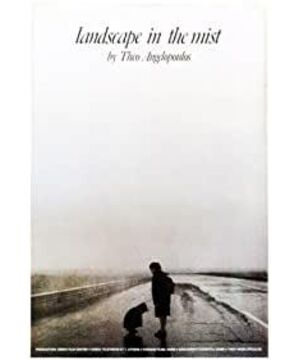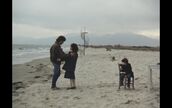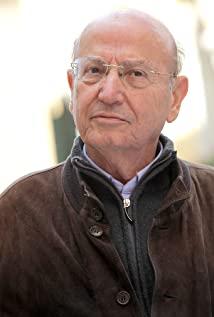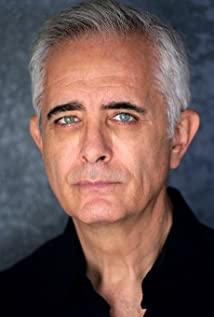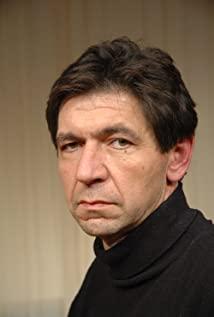Okay. , Less gossip, enter the topic. "Landscape in the Mist" is the second An Zhe movie I watched. An Zhe’s films always use too many beautiful symbolic scenes to give viewers the desire to speak, but An Zhe’s image itself is like some beautiful paintings or sculptures. You can analyze his techniques, methods, and tidbits. , But it is almost impossible for you to explain him. You can only feel with your own eyes, ears, and heart. In this film, I saw him again with a large number of long pans moving still, always inadvertently completing the smooth transition from one perfect composition to another. For example, when the helicopter lifts the big hand from the sea, the camera slowly rises, stays still, and stares. It is shocking and amazing when it stands out from the sea at first, but it gradually becomes two small black dots in the sky. The sighs were all done silently in this shot, and then the camera slowly moved back. The three people watching on the coast appeared, and the emotions were transformed to the protagonist’s own destiny connected with this scene. The original sighs went further. Floor.
A lot of techniques like this are used. What’s amazing is that his shots are beautiful, but these beauties are different from the "complete" beautiful effects made by CG now, just like the Venus of Milos, it seems to crawl out of the mud. The flaws after coming out add a layer of refinement to her own beauty. An Zhe’s shots are just like that. Just a little artificial or even no modification of the surrounding scenes can reveal the beauty, such as my favorite part of the snow, the moment when the heavy snow falls, all the people in the snow are like statues. Come and look up at this gift from heaven, but in this tranquility, the agility of two angel-like children running through the scene is smooth and gentle. In the middle, perhaps a little different from life is that people pause in the snow for a little longer, but in An Zhe's poetic eyes, this can capture the beauty here. As a result, small villages with muddy roads, dimly lit karaoke halls, highways with heavy rain, and even dilapidated stations have all become the endorsements of beauty in such eyes. Moreover, whether it is the crowd that seems to be still in the snow, the big hand being lifted, or the tree at the end of the fog, they all contain a certain mythological meaning (which happens to be the opposite of the religious meaning of Laoji and Laoda). This is his beauty. A place like no other. This scene is realistic, but this beauty comes from the surreal play of the scene.
Compared with the so-called poetry of some so-called poets, An Zhe’s poetry has never been at the expense of ignoring reality. His image beauty is originally built on the basis of reality. He will not do it for deliberate needs. And turning a blind eye to ugliness, it's just that these things, through his lens, don't carry strong hatred, but they carry a kind of silent compassion. For example, in the film, the little girl is raped by a truck driver. The camera stares at the criminal rear hood from the middle shot. Apart from the natural noise, there is no cry for help or music that symbolizes the unwonderful situation, just staring coldly. At this time, not far from the truck, two cars stopped, and some people walked down from them. This is not a good person arranged by a popular drama to arrive on time, but a passerby at all. The people in the car just got out of the car, changed cars, and then drove away without any influence on the incident. But this setting exerted an impact on the audience. An Zhe tortured the audience who were worried about the little girl. It was like letting people who were killed in the sea see the ship, but found that it was a mirage, and the two cars were parked extraordinarily long. Torture your nerves. Is he cruel? It is not him who is cruel, the reality is cruel. He was like a sad spectator who wanted to cry, only to find that he was dumb, and he could only cry silently. After the incident, the driver seemed to climb out with a sense of guilt and leaned against the car, and only then did the camera slowly approach the dark carriage. The little girl crawled to the door with difficulty, did not speak, but leaned against the wall of the car. A lot of blood was dripping from her skirt. She did not cry or grieve, but stroked her blood indifferently and smeared it on the wall of the car. . An Zhe always keeps his perspective away from these depressing and sad things, but his lens itself is crying. Just like the scene of selling villains and snakes in "Eternity and One Day", there is no sound, only the contrast of light and dark, which symbolizes good and evil, but what can be felt is the heavy emotional investment that can not be suppressed in this silent lens.
Now I want to talk about the symbolic part of the film. As I said before, his film actually refuses to explain it. However, people always want to talk about the desire to speak. Let me just talk nonsense here, purely as my excuse:
The role setting in the film is very interesting. The protagonist is two children, but to be precise, the five-year-old brother represents a person’s childhood, while the twelve-year-old sister is a teenager. The kind-hearted motorcyclist is a young man. The dirty truck driver is obviously middle-aged, and the uncle of the children who first appeared (translated so, I think it should be uncle), with gray hair, can be classified as old. Childhood children are the most agile. They move around like adults, and even go to small restaurants to "work". Although there are tears (more on this later), in general, it is a rapid development. However, as a teenager, there is no innocence in childhood. The twelve-year-old sister is more cautious and mature. When she is bluffing and trying to be an adult, she is more confused and more vulnerable than she was in childhood. When it comes to youth, it has finally developed into its heyday, everything has matured. The pursuit of ideals and trust in humanity have not been lost, but they are still inevitably hit (the play cannot be staged), but they are not depressed. There is a strong momentum. But after entering middle age, it became reality. He didn't dare to face upright even a provocation. He would only drink and pretend to be kind with a purpose to bully the teenager. When I was old, the reality had come to an end, I didn't dare to take any risks, and waited cringly for Death's call (this last one I have more speculations). Among these five stages, childhood, adolescence, and youth are especially valued by An Zhe. They once accompanied them, but in the end they could not escape their separate fate.
As for the two siblings of the protagonist, the elder sister is more like representing rationalism, calm and firm, taking a younger brother bravely to the father in Germany who doesn’t know if there is any, but the result of reason is, Being bullied by ruthless market servants. The younger brother, hardly cares about where he goes, listens completely to what his sister says, but expresses his feelings more unscrupulously every time, and may be a symbol of irrationalism relative to his sister—I have to admit, nonsense, it’s The passage of crying because he held the dying horse reminded me of Nietzsche.
The journey of the brothers and sisters to the distant Germany is like a process of human pursuit. I had such dreams in my childhood and adolescence, even though my ideas may be completely different, I just closed my eyes and dared forward without going back to the place of hope. When you are young, you will still pursue it, but you will encounter more pain, so it will lead to middle-aged and old age. In this pursuit, there is kind help, evil spying, but more is nothing more than good or bad indifference. The theater’s stage was forced to give up. It’s not that people hate theater and the people who acted. It’s just that the projects are more profitable. Maybe those things are that there are no so-called friendly and bad intentions, but for everyone who is vulnerable, there is only being The result. It’s just that An Zhe gave hope in the end, and walked through the invisible fog to the end. There was a tree in the distance, whether it was an olive tree or not, and finally you could see the two happily running over—the first time they both ran up. Not to escape.
View more about Landscape in the Mist reviews


